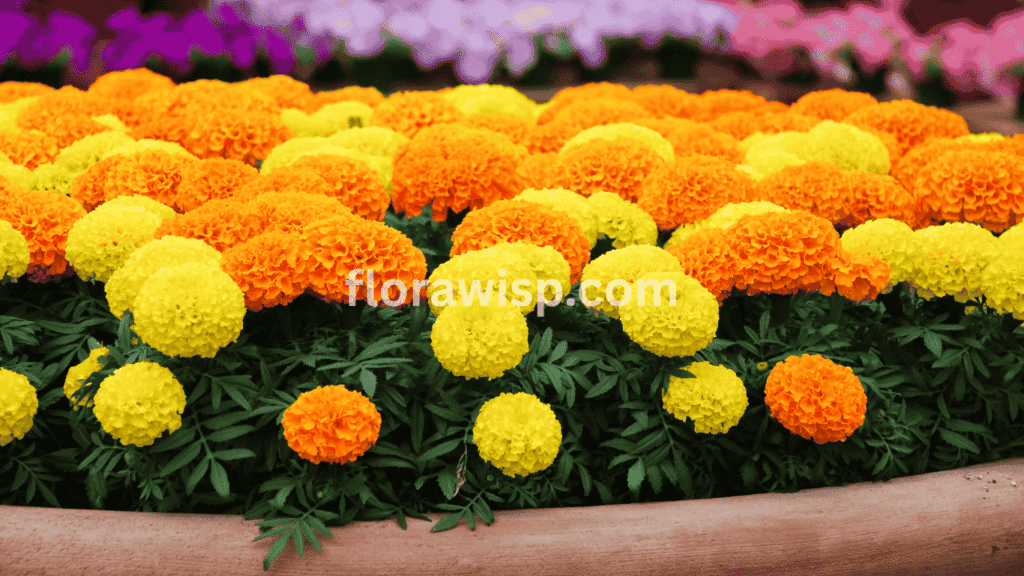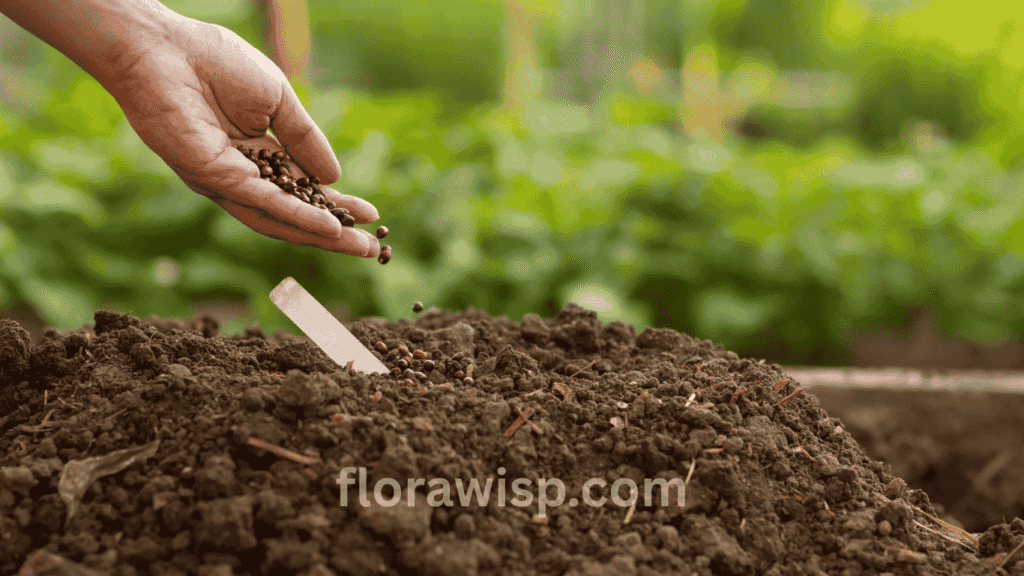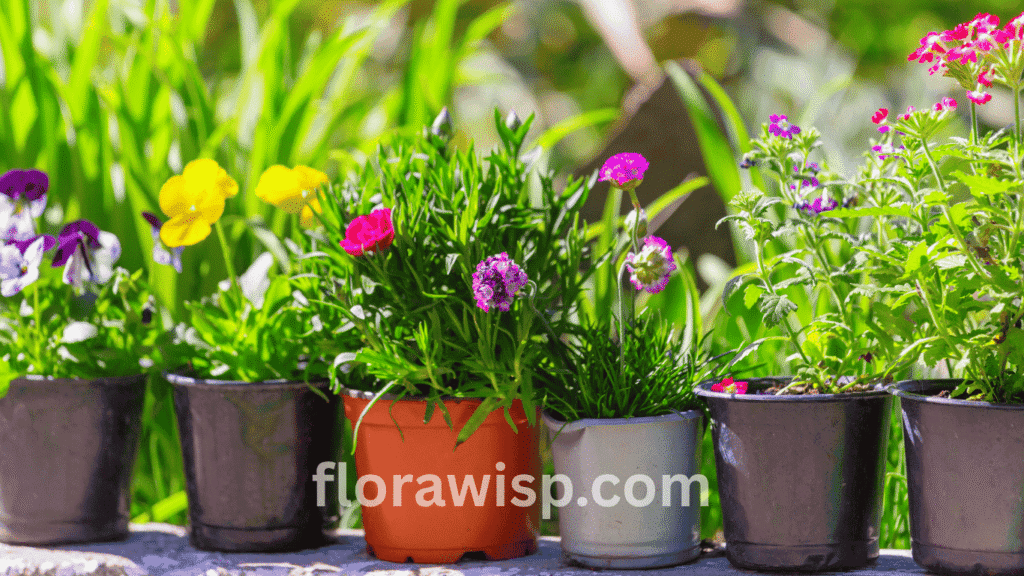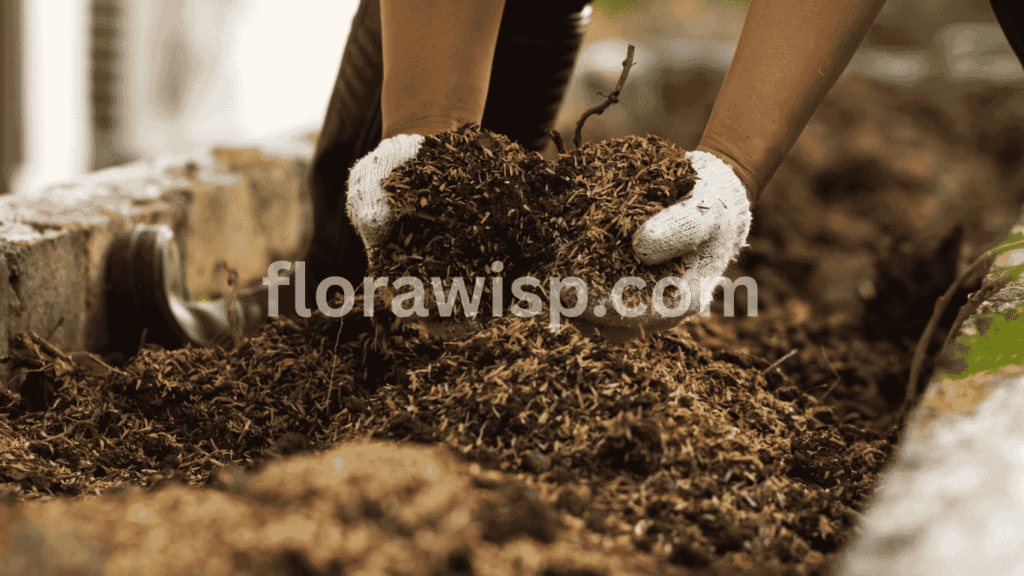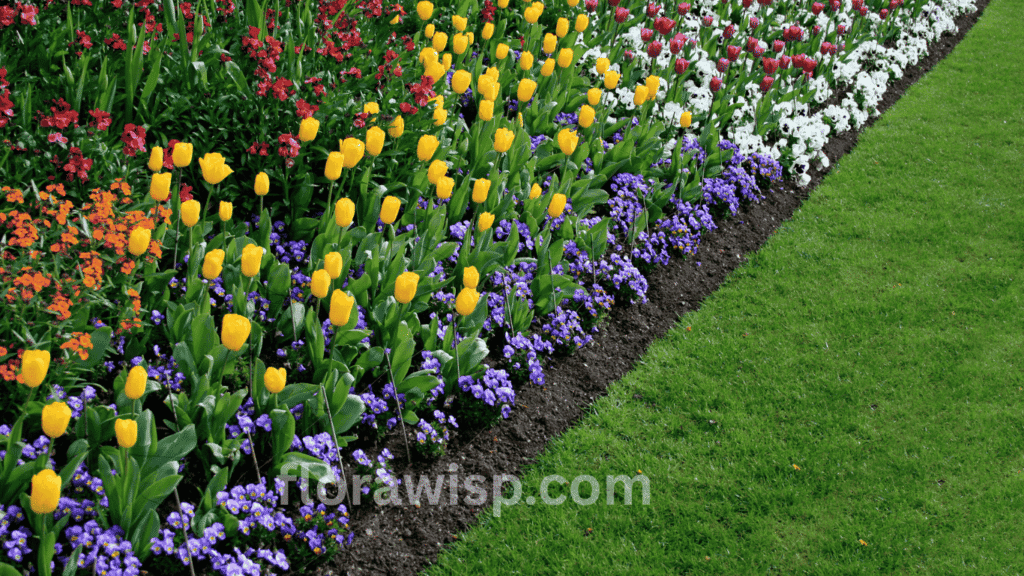Discover the most stunning types of marigold every gardener should know! From rare colors to care tips, unlock the secrets to growing vibrant marigold varieties today. Don’t miss your next garden favorite, start planting now! Marigolds have long held a special place in gardens around the world from vibrant city balconies to rural homesteads. As someone who’s nurtured marigolds across seasons and climates, I can say with surety : these flowers are much more than their bright faces suggest.
In This Article
They’re guardians of vegetable beds, companions to pollinators, and messengers of culture and tradition. Whether you’re growing for beauty, biodiversity, or both, marigolds offer unmatched versatility. In this guide, I’ll walk you through the most beloved types of marigold, from the tiny but mighty French varieties to the towering African blooms.
We’ll also explore rare colors, desert species, and medicinal uses, all grounded in real-world experience and practical tips. You’ll not only discover how to grow them successfully but also how to make the most of what they offer beyond the bloom. If you’re ready to start planting, be sure to choose high-quality marigold seeds suited to your growing zone. Let’s explore the rich variety of marigold plants and learn how to bring their color, charm, and purpose into your own garden.
Understanding Marigolds: The Basics First
What Makes Marigolds So Special in Home Gardens

In my years as a marigold gardener, one thing stands out: marigolds are as practical as they are pretty. These resilient blooms are beginner-friendly and adaptable, thriving in everything from container gardens to full sun flower beds. What makes them special? Their ability to repel pests, attract pollinators, and bloom continuously from early summer until frost. When I first introduced marigolds into my vegetable garden, aphid infestations dropped significantly. For a broader view on how to get started with blooms, check out this complete guide to planting flowers the right way.
Overview of Marigold Plant Varieties
The types of marigold available to gardeners today are diverse and colorful. The most popular marigold plant varieties include French, Mexican, African, and unique color hybrids. They all differ in height, bloom size, fragrance, and leaf structure. Marigold leaves vary from the deeply lobed fern-like structure of French marigolds to the broader leaves of African types. No matter the type, these vibrant flowers bring life to any space.
French Marigolds : Small in Size, Big in Beauty
Characteristics of French Marigolds Plants

Among the most charming type of marigolds, French marigolds are a go-to favorite for gardeners who value both beauty and practicality. Their compact size makes them perfect for edging beds, containers, or companion planting in vegetable gardens. These vibrant little powerhouses offer more than just color; they bring structure, scent, and resilience to any outdoor space.
Here are some defining traits of French marigolds plants:
- Size: Typically 6–12 inches tall, ideal for tight spaces and borders.
- Bloom Style: Frilly, double-layered flowers in rich tones of orange, red, and gold.
- Foliage: Finely divided, fern-like leaves with a pleasantly earthy fragrance.
- Growth Habit: Fast-growing, bushy plants that thrive quickly from seed.
- Seasonality: Long bloom period, often from late spring until first frost.
In my own raised beds, I use French marigolds to border tomato rows. Not only do they look stunning, but they also deter aphids and whiteflies effectively. I’ve found they handle summer storms better than taller marigold varieties, bouncing back from heavy rain without breaking. If you want to explore a more medicinal and tea-friendly variety, check out pot marigold and how it thrives in containers.
Tips for French Marigold Planting and Growth
To enjoy lush blooms and healthy plants, avoid a few common missteps that many gardeners make with French marigold planting.
Start with these proven tips:
- Sunlight & Soil: Plant in full sun with well-drained, slightly sandy soil. They dislike soggy roots.
- Seed Starting: You can sow directly after frost or start seeds indoors 4–6 weeks earlier. I’ve had great success transplanting indoors around mid-March.
- Spacing: Keep 6–8 inches between plants to ensure air circulation.
- Watering: Water at the base of too much moisture on foliage encourages mildew.
- Maintenance: Deadhead regularly to promote continuous blooms.
Common Mistakes to Avoid:
- Overwatering: It’s the fastest way to kill marigolds. Let soil dry slightly between waterings.
- Poor drainage: Compact or clay soil leads to root rot.
- Skipping deadheading: Faded blooms drain energy and reduce flowering.
Curious Gardeners Ask:
- “Why do my French marigolds stop blooming mid-season?”
Often due to heat stress or nutrient-poor soil. A mid-season compost top-up usually restores blooms. - “Can I grow French marigolds in pots?”
Absolutely! Choose a pot with good drainage and place it in full sun. I grow them in window boxes for color and pest control near herbs.
Where to Get Quality French Marigold Seeds
If you’re shopping for French marigold seeds, focus on quality over quantity. Seed buyers often worry about low germination rates or mislabeled varieties.
Here’s what I recommend looking for before you buy:
- Heirloom vs. Hybrid: Heirlooms offer consistency and seed-saving potential.
- Organic Certification: Especially important if you’re companion planting with edibles.
- Regional Suitability: Choose seeds suited to your growing zone for best results.
- Packaging Date: Always check for freshness; older seeds may struggle to germinate.
Personally, I trust regional seed co-ops and family-run nurseries over mass-market options. These sources tend to stock better-adapted varieties and provide growing tips specific to your climate.
If you’re planting French marigolds for beauty, borders, or garden health, choose seeds that reflect your purpose. Whether for a small balcony pot or a vibrant vegetable bed, picking the right type of marigolds starts with the right seed.
Mexican Marigolds: Bold Blooms & Herbal Traditions
Growing the Classic Mexican Marigold Plant

The Mexican marigold plant, known botanically as “Tagetes erecta”, is a bold statement-maker in the garden. Towering up to 4 feet tall, its large, pom-pom-shaped blooms in vibrant golds and yellows are impossible to miss. These are not just beautiful flowers, they hold deep cultural roots in Mexican traditions, especially during Día de los Muertos (Day of the Dead), where they’re believed to guide spirits with their vivid color and scent.
Here’s what makes Mexican marigolds so special among the many types of marigold:
- Cultural Significance: Used in altars and grave sites during Day of the Dead as symbols of remembrance.
- Edibility & Safety: While not commonly consumed, petals are non-toxic and sometimes used as natural dyes though not all varieties are edible.
- Seasonal Strength: Thrive in full sun and bloom from late spring to frost, especially in Zones 9–11.
- Pollinator Appeal: Their bold fragrance attracts bees and butterflies while repelling harmful insects.
- Soil Preference: Perform best in rich, well-drained soil with compost mixed in at planting time.
In my garden, I’ve found that Mexican marigolds act like natural sentinels warding off nematodes and leafhoppers in my vegetable beds. Their tall stems hold up well even in windy conditions if spaced properly and grown in sun-drenched soil.
Can I grow Mexican marigolds in containers?
Yes, but choose deep pots (at least 12–14 inches) to support their roots and height. Use a lightweight potting mix for best results.
Why are my Mexican marigold leaves turning yellow?
This often signals overwatering or poor drainage. Let the soil dry slightly between waterings, and avoid waterlogged roots.
Unique Benefits of Mexican Mint Marigold
Often confused with its taller cousin, Mexican mint marigold (Tagetes lucida) is a smaller, herbaceous plant valued for both culinary and medicinal uses. Unlike Tagetes erecta, which is grown mainly for ornamental purposes, this marigold variety is treasured in herb gardens for its anise-like flavor.
Here’s what buyers often want to know:
- Flavor Profile: Tastes similar to French tarragon slightly sweet with hints of licorice.
- Safe for Use: Yes, commonly used in teas, sauces, and herbal remedies.
- Growing Needs: Prefers full sun, well-drained soil, and regular pruning to stay bushy.
- Beyond the Kitchen: Known to repel mosquitoes and soothe digestive issues when brewed as tea.
In my own herb patch, I keep Mexican mint marigold near the back door for quick snips into soups and teas. Its resilience in dry heat and ability to regrow after harvesting makes it one of my favorite dual-purpose plants.
For buyers, look for organic, heirloom mexican mint marigold seeds or young plants from nurseries that list detailed growing instructions. Always check for freshness and adaptability to your zone to ensure success.
African Marigolds : Giants of the Marigold World
Features of Tagetes African Marigold

When it comes to bold garden statements, Tagetes African marigold easily earns the crown. Often reaching up to 3 feet tall with massive blooms that span 3 to 5 inches across, these showy plants add instant drama to garden beds, back borders, and sunny walkways. Their upright habit and full, textured foliage provide vertical structure where most summer annuals stay low to the ground.
Here’s why giant marigold plants are prized among gardeners exploring different types of marigold:
- Massive Blooms: Fully double flowers in shades of gold, yellow, and orange that stand tall and last weeks on the stem.
- Foliage & Form: Lush green leaves with a fern-like texture and a mild, earthy scent.
- Sun Seekers: Thrive in full sun and appreciate 6–8 hours of direct sunlight daily.
- Pollinator-Friendly: These bold blossoms attract bees, butterflies, and even hoverflies that help control aphids.
- Soil Preference: Best grown in fertile, well-drained soil amended with compost or aged manure.
As someone who grows African marigolds every spring, I’ve come to love their resilience. They’re surprisingly drought-tolerant once established, and I often rely on them to anchor large container arrangements or line the back of my vegetable beds to repel nematodes and beetles.
How to Grow from African Marigold Seeds
Starting African marigold seeds is a rewarding process for gardeners at all levels. These seeds are known for their high germination rate and quick growth under the right conditions.
Here’s my step-by-step recommendation for success:
- Timing: Direct sow outdoors once all danger of frost has passed, or start indoors 4–6 weeks before your final frost date.
- Soil: Use light, loamy soil with good drainage. Avoid compact clay soils.
- Moisture: Keep the soil evenly moist not soggy until seedlings appear (usually within 5–7 days).
- Spacing: Thin seedlings to 10–12 inches apart to allow airflow and full bloom development.
- Succession Planting: In warmer zones, stagger your sowing every 2–3 weeks through early summer for nonstop color into fall.
In my Zone 8b garden, I’ve had the best results sowing seeds directly in raised beds. The warmth of the soil helps with fast germination, and staggered planting keeps the garden looking vibrant all season. If you’re just starting out, here’s a full guide on How to Plant Flowers from Seeds to help you succeed from day one.
Caring for Giant Marigold Plants
Once your giant marigold plants take root, they’re low-maintenance if you follow a few essential tips. Due to their height, staking is wise in windy locations to prevent snapping. A bamboo cane and soft garden tie do the trick without damaging the stem.
Water deeply once or twice a week to encourage deep root growth. I mulch around the base with straw or compost to lock in moisture and suppress weeds. African marigolds are heavy bloomers, and regular deadheading ensures a constant flush of flowers.
For the best results, feed every 3–4 weeks with a balanced flower fertilizer. Keep an eye out for spider mites in hot, dry weather; an occasional misting or companion planting with basil or nasturtiums helps deter them.
Whether you’re growing them for their ornamental value, pest-repellent traits, or pure visual impact, Tagetes African marigold is a garden classic that continues to impress season after season. To keep them thriving, consistent Marigold Care makes all the difference.
Unique & Rare Types of Marigold You’ll Love

The Radiance of Yellow Marigold Plants
Yellow marigold plants add cheerful brightness to any garden. I often plant them along pathways to create a golden glow that lasts for months. These types of marigold are usually African or hybrid varieties bred for extra-large blooms.
Growing Pink Marigold Plants in Your Garden
Pink marigold plants are a rare beauty. My favorite is the “Strawberry Blonde,” a hybrid with soft pink and peach tones. These pink marigold plants are perfect for cottage gardens or floral borders, offering a romantic twist on traditional marigolds.
Strawberry Blonde Marigold Plants – A Soft Touch
Strawberry blonde marigold plants bloom in stunning pastel shades. They’re ideal for mixing with lavenders and light blues. In cooler temperatures, their colors intensify, creating eye-catching contrast in fall displays.
What You Should Know About White Marigold Varieties
White marigold varieties like “Vanilla” offer an elegant, subtle alternative to brighter hues. These types of marigold require the same care as their colorful cousins but stand out in moonlight gardens and monochrome themes.
Vibrant Orange Marigolds for Classic Appeal
Orange marigolds are garden staples. Their vibrant color attracts pollinators and beneficial insects. I use them in borders and as interplanting in my vegetable rows. These classic blooms are both ornamental and practical.
Desert Marigold : The Drought-Resistant Beauty
Where It Thrives and How to Care for It
Of all the types of marigold, the desert marigold (Baileya multiradiata) stands apart for its natural toughness and wild charm. Native to the American Southwest, especially Arizona, New Mexico, Nevada, and parts of West Texas, this sun-loving perennial is often spotted blooming along highways, open plains, and xeriscaped home gardens.
In fact, my first encounter with desert marigolds was during a trip to Tucson, where I saw them thriving in gravel beds under 100°F heat, no irrigation, no fuss, just bright yellow blooms dancing in the desert breeze. That’s when I realized their potential for low-maintenance landscapes.
Gardeners often ask:
- Can desert marigolds grow in my region?
If you live in USDA Zones 7–10 with hot, dry summers and minimal rainfall, desert marigolds will likely flourish. - Do they need rich soil?
Absolutely not. These plants prefer poor, well-drained, sandy, or rocky soil ideal for xeriscaping or native gardens. - How often should I water?
Once established, they thrive on natural rainfall. In containers or newly planted beds, water sparingly until roots set.
To maintain blooms from spring through early fall, deadhead regularly and cut back any leggy stems. They self-seed easily and attract pollinators like native bees, yet deer tend to avoid them.
With a rich history as a resilient desert wildflower and a perfect fit for sustainable gardening, the desert marigold is more than ornamental; it’s a lesson in beauty through simplicity.
Beyond Blooms : The Practical Uses of Marigolds
Marigold Tea: How It’s Made and Its Uses

Marigold tea, made from dried petals, is known for its anti-inflammatory properties. Steep one tablespoon of dried petals in hot water for 10 minutes. I often enjoy it in the evening for digestion. It’s also used externally for skin care.
Marigold Health News and Traditional Remedies
Recent marigold health news highlights its use in wound healing and immune support. Traditional healers have used marigold-infused oils to treat cuts and rashes. My grandmother used marigold salves on bug bites during our summer hikes.
Do Rabbits Eat Marigolds? Garden Protection Tips
A common question I get is, “Do rabbits eat marigolds?” Typically, they avoid them due to their strong scent. However, in scarce conditions, rabbits might nibble. Surrounding more sensitive plants with marigolds can act as a natural deterrent.
Marigolds in Culture & Commerce
The Symbolism Behind a Bouquet of Marigolds
A bouquet of marigolds often symbolizes passion, creativity, and remembrance. In Mexican culture, they are central to Day of the Dead celebrations. I often include marigolds in arrangements for weddings and festive events due to their vibrant energy.
Insights Into the Global Marigold Market
The marigold market extends far beyond gardens. Marigold extracts are used in poultry feed, cosmetics, and dyes. Demand for natural pigments has increased interest in commercial marigold farming, especially in Asia and Africa.
FAQs
Q1: What are the main types of marigolds grown in home gardens?
The three most common types of marigolds you’ll see in home gardens are French marigolds, Mexican marigolds, and African marigolds. Each has its charm French marigolds are compact and ideal for borders or containers, African marigolds produce large, showy blooms perfect for backdrops, and Mexican marigolds hold deep cultural significance. I grow all three types of marigold in different sections of my garden to enjoy variety in height, color, and bloom duration.
Q2: Are pink marigold plants real, and can I grow them easily?
Yes, pink marigold plants do exist! Though not common, varieties like ‘Strawberry Blonde’ produce beautiful pastel blooms with hints of peach, rose, and cream. I’ve grown them in raised beds alongside yellow and orange marigolds for a stunning contrast. They grow just like any other marigold full sun, well-drained soil, and regular deadheading to keep the color show going all season long.
Q3: What is Mexican mint marigold used for?
Mexican mint marigold is a wonderfully versatile herb. Its anise-flavored leaves are commonly used in teas and as a natural substitute for French tarragon in cooking. I keep one right outside my kitchen for easy clipping. It’s also known for digestive support and makes a calming tea. Beyond culinary use, it adds ornamental value to herb gardens and even deters certain insects with its strong fragrance.
Q4: Where can I find quality African marigold seeds?
To buy genuine African marigold seeds, look for seed packets labeled “Tagetes erecta” from reputable nurseries or online stores. I usually choose heirloom or regionally adapted varieties from trusted seed companies, especially those that note high germination rates and fresh stock. I’ve had the best luck with smaller regional seed co-ops that prioritize organic practices and seasonal freshness.
Q5: What is the benefit of planting desert marigolds?
Desert marigolds are perfect for gardeners in hot, dry climates. Once established, they require almost no water and bloom for months with little care. In my desert-friendly rock garden, they’ve filled the space with golden color while attracting bees and withstanding intense summer heat. Their drought resistance, self-seeding habit, and suitability for xeriscaping make them one of the most sustainable flowering choices for low-water landscapes.
Conclusion
Marigolds are far more than vibrant fillers in a flower bed; they’re resilient workhorses, healing herbs, and cultural treasures. From the compact charm of French marigolds to the towering elegance of African varieties, and the drought-defying desert marigold, each type offers something uniquely valuable to the home gardener.
In my own gardening journey, marigolds have proven time and again that beauty and purpose can grow hand in hand. Whether you plant them to deter pests, brew herbal teas, or simply enjoy their joyful blooms, these versatile flowers never disappoint.
As you plan your next garden season, consider experimenting with new marigold plant varieties. Try a rare Strawberry Blonde for a soft pop of color, or a hardy desert marigold to thrive through intense summer heat. There’s always room in the garden and in the heart for one more marigold.
References
Missouri Botanical Garden – Tagetes (Marigold) Profile
National Gardening Association – Marigold Growing Guide
UF/IFAS Blogs – Marigolds: Blooms of Cultural Significance
Gardener, M.Sc. Horticulture
Elara Bennet is a gardening writer from Austin, TX, passionate about sustainable lawns and blooms. Read full bio →

